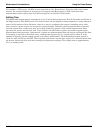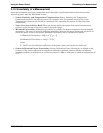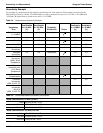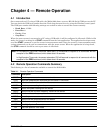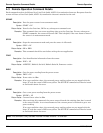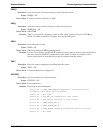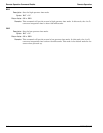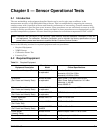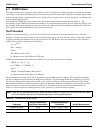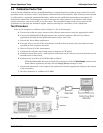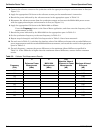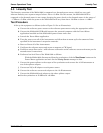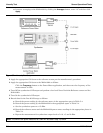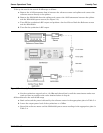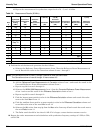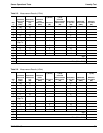
VSWR Pretest Sensor Operational Tests
5-2 MA24106A UG
5-3 VSWR Pretest
The most common cause of power sensor failure is excess input power. Applying power exceeding the damage
level shown on the label will damage the sensor’s sensing element resulting in impedance change. Input match
will be degraded when element impedance is changed. If you suspect that a senor is damaged, you should start
with an input match pretest.
The maximum VSWR values are listed in the Performance Specification section of this manual. The
uncertainty of the VSWR test equipment will affect actual measurement values. See the following Table 5-2 for
an example of how measurement system uncertainty can affect the Expected Maximum Reflection Coefficient
when using the Anritsu MS4624B Vector Network Analyzer.
Test Procedure
Follow the manufacturers S
11
(or return loss) calibration procedure to perform calibration on a network
analyzer. Connect the power sensor to the network analyzer test port and measure power sensor input match.
Typically, matches are measured in terms of return loss in dB. Return loss and magnitude of the reflection
coefficient conversion equations are as follows:
ρ = 10
–RL/20
RL = –20logρ
where
RL = Return Loss in dB
ρ = Magnitude of the Reflection Coefficient
VSWR and magnitude of the reflection coefficient conversion equations are as follows:
VSWR = (1 +
ρ) / (1 – ρ)
ρ = (VSWR – 1) / (VSWR + 1)
where
VSWR = Voltage Standing Wave Ratio
ρ = Magnitude of the Reflection Coefficient
Record the measured data into Table 5-2 under the Actual Measurement column. The Actual Measurement
should be smaller than the Maximum Reflection coefficient. The Maximum Reflection Coefficient is equal to
the measurement system uncertainty added to the sensor’s reflection coefficient specification. If the Actual
Measurement reflection coefficient is larger than the Maximum Reflection Coefficient, then the power sensor
may be defective. If the actual reflection coefficient is significantly larger than the maximum values in
Table 5-2, then the sensor is damaged and it is not necessary to perform further testing.
Note: There are no user-serviceable parts inside the power sensors. Contact your local Anritsu Service Center
and return defective sensors with a detailed description of the observed problem.
Table 5-2. Pretest Measurement Result
Frequency
MS4624B Reflection
Coefficient Uncertainty
Maximum Reflection
Coefficient Actual Measurement
50 MHz to 2 GHz 0.013 0.050 + 0.013 = 0.063
2 GHz to 6 GHz 0.020 0.100 + 0.020 = 0.120



